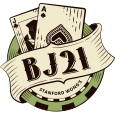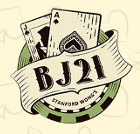Standard Deviation of a Binomial Distribution

Sharp Sports Betting is a tool for those interested in winning money at sports betting. The book explains the most common sports bets, what all the numbers mean, and the mathematics behind the numbers.
As a preliminary note, it should be noted that all casino advantage players, including blackjack players of all skill sets, which includes card counters, should have a good working knowledge of Expected Value. You should not be betting online or in land-based casinos without this fundamental knowledge.
A method for testing systems for finding good bets against the spread is to apply the traditional statistical tests using standard deviation. Variance for a binomial distribution is npq. The n is the number of games you bet; p is the probability of winning by guessing, i.e. 0.5; and q is 1-p. The standard deviation is the square root of the variance.
The npq approach yields approximate answers, and the approximation is less accurate the farther you get out in the tails of the distribution.
Sample Problems
Problem 1
The leader in a basketball handicapping tournament is 27-8 against the spread. Can you conclude that this guy is a great handicapper?
Problem 2
Which is less likely to be a random result, a record of 15-5 for twenty games or a record of 65-35 for 100 games?
Problem 3
A small preliminary sample indicates that a method is able to predict winners about 60 percent of the time. Assuming the 60 percent rate of success continues, how large a sample is needed to meet the 1:1000 test of rarity?
Solutions to Sample Problems
Problem 1
A record of 27-8 meets the criterion for being a 1:1000 rare event. However, there are at least two reasons to be cautious before concluding that the leader is a great handicapper.
One thing to look at is how many people are entered in the tournament. If there are hundreds of entrants, then the chances are good that the leader will achieve a 1:1000 result by chance alone.
The other thing to be aware of when analyzing tournament data is sometimes some of the lines are “soft” — that is, bets available in the tournament might not be available to people wanting to bet real money. For example, if Chicago is a 10-point favorite on every board in town but a tournament card has Chicago -8, entrants are likely to take Chicago for the tournament. They will take Chicago in the tournament because it is -8 there, but they will not be able to put real money on Chicago -8. It’s easier to compile a record of 27-8 in a tournament with soft lines than with real money against the spread.
In summary, the guy could well be a great handicapper, but you can’t say so conclusively based only on his leading a tournament with a 27-8 record.
Problem 2
15-5 is 75 percent winners, whereas 65-35 is only 65 percent winners. Nevertheless, 65-35 is harder to achieve by guessing. A record of 15-5 is achieved by guessing more than once in 100 tries, whereas 66-35 is achieved by guessing less than once in 100 tries, and almost reaches a rarity of one in 1000. By that standard, a record of 65-35 is more impressive than is 15-5.
Most likely the person with the 15-5 start will not keep hitting 75 percent winners. It’s unlikely that by the time that person’s picks total 100 that the W-L record will be 65-35 or better. Of course it’s possible, but it’s not likely.
Problem 3
For a sample size of 250, the W-L record required for significance is 150-100. That’s 60 percent winners. If the method keeps picking 60 percent winners, your testing will achieve significance at the 1:1000 level when your sample size gets to 250.
This is part of an occasional series of articles.
Excerpted with permission from Sharp Sports Betting by Stanford Wong, edited for this format.











Please log in or register to leave a comment